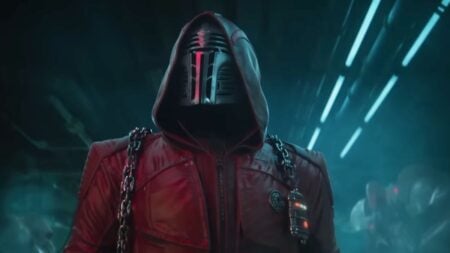Skip To...
Hugh Jackman will finally wear the iconic yellow and blue Wolverine suit from the comics in Deadpool 3. What seemed like an implausibility for two decades has become mainstream and popular. People have collectively decidedly that, yes, we do want the yellow spandex. Movies have come a long way since the inception of superhero suits, evolving through the times. Learn more about how filmmakers adapted from the Superman template, and how X-Men and the MCU changed all that, leading to Jackman finally wearing the suit that made Wolverine well-known.
The Origins of Superhero Suits

The idea of superhero costumes was never about practicality. When Jerry Siegel and artist Joe Shuster created Superman in 1938, the goal was to create a character that stood out, using the brightest colors available on printers. Superman was the impossible man, so his suit was impossible. The outside underwear and the cape eventually become synonymous with superheroes.
Since the concern was how superhero costumes would look on pages, there wasn’t a lot of thought about what the suits would look like in live-action. It wasn’t until George Reeves put on the suit in the live-action Superman shorts from the ’50s that audiences got a taste of what a superhero suit would look like in real life. Superman’s costume looked like sewn-up spandex made of light clothing fabrications like wool or cotton.

It was a clothing style that Adam West’s Batman television show adopted. West didn’t wear armor or padded clothing like heroes wear today. He instead wore simple spandex, with his boots and belts made of leather.

By the time Christopher Reeves put on the iconic S for 1978’s Superman, superhero costumes hadn’t evolved too much. Reeves wore a spandex suit made up mostly of blue nylon material.
Tim Burton Makes Batman’s Superhero Suit More Practical

Live-action superheroes would, more or less, follow the same template set up by George Reeves until Tim Burton’s Batman in 1989. Burton’s gothic approach to Batman and the Gotham mythos had a dark surrealistic atmosphere – a far cry from the camp of the ’60s Batman show.
Instead of wearing spandex like West, Michael Keaton wore leather and armor. Though Keaton’s movement in the suit was limited, it was clear to audiences that the costume was meant to protect him.
Related:
The Flash: Why Does Alternate Barry’s Suit Look Like Batman’s?
It gave audiences the illusion that the suit served practical purposes. When people believe something is more practical, they take the premise more seriously.

From there, superhero costumes went in a darker direction. Movies based on or inspired by pulp heroes like The Shadow and Darkman skewed towards gloomier aesthetics. Warren Beatty’s Dick Tracy mixed brightly colored costumes with heavy shadows, creating a comic-book feeling to the film.
Blade and X-Men Change Everything About Superhero Suits

The first Blade movie changed everything about people’s perspective of superheroes. He wasn’t an over-the-top character with brightly colored spandex. He was a serious-minded hero who wore black leather.
The leather costume from the first Blade was an instant hit, quickly becoming the definitive look of the character and establishing a new precedent for superhero appearances. Blade represents the modern hero of the modern day, meaning the spandex was out.
The all-leather look eventually got adopted into the first X-Men film in 2000. X-Men purposely avoided sharing similarities with its comic book origins, even having a piece of dialogue openly mocking how ludicrous spandex costumes were. X-Men was a serious film for a serious audience, focusing on themes about prejudice, racism, and acceptance.
Though leather has almost always been part of a superhero suit, the full leather outfits of Blade and X-Men made leather the default material for live-action superhero clothes.

Sam Raimi’s Spider-Man films chose to adapt the iconic outfit from the comics more faithfully, creating one of the most accurate superhero costumes of the time. However, the Spider-Man suit still had a leather-like aesthetic to its appearance.
The MCU and the Modern-Day Superhero Suit

Superhero costumes haven’t gone back to the wool and nylon spandex of classic interpretations, fully adopting the leathery look. Even if the suit isn’t leather, it’s made up of material that looks like it.
Whereas characters like Iron Man and War Machine wore iron armor, other heroes wore simpler attire. Captain America, Hawkeye, Black Widow, Ant-Man, and several other heroes in the MCU wore costumes that have the appearance of leather.
Related:
Deadpool 3: Is Wolverine’s suit the same as in 2013’s The Wolverine?
While leather is still the go-to material for superhero costumes, live-action hero suits have become more and more accurate. The fear of filmmakers back in the day was that audiences wouldn’t accept colorful costumes and take the premise seriously. However, because superheroes have become so mainstream, audiences have learned to accept superheroes for what they are, with fans now demanding they wear costumes matching their comic versions.

If filmgoers can suspend disbelief to the point of accepting that a talking raccoon can exist in The Guardians of the Galaxy, they can surely accept Wolverine wearing a brightly yellow suit in Deadpool 3. Modern-day audiences not only accept this change but demand it, as the excitement of seeing Wolverine wearing his comic book outfit has brought much elation to fans of the character.







